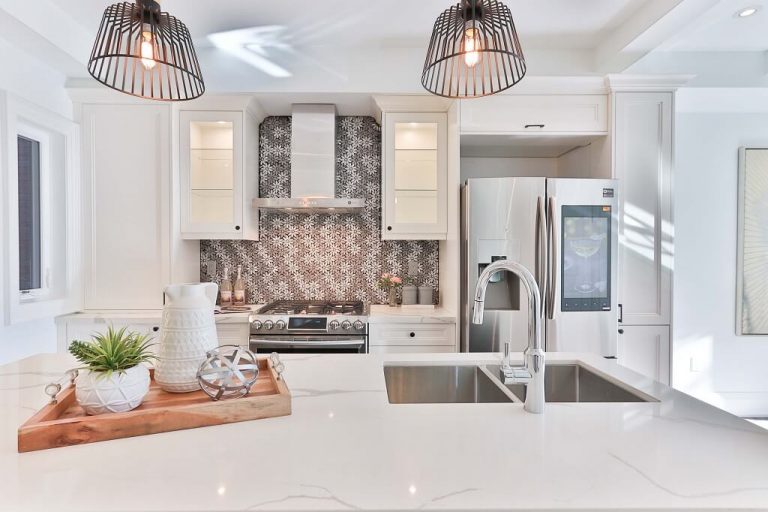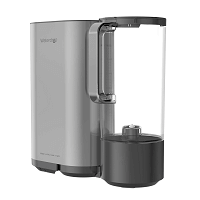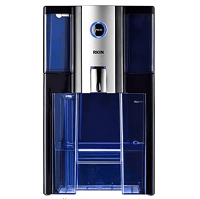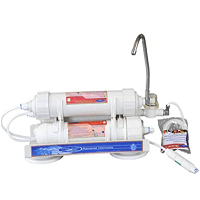Table of Contents [show]
Countertop ROs are compact reverse osmosis filters you can use to purify consumable water. You can install them under your bathroom or kitchen sink’s counters. A majority of countertop RO systems can be stored under most counters, typically under sink cabinets. Unfortunately, renters don’t have the luxury of using countertop RO systems, as installation of them would warrant permanent changes to either the home’s drain system or sink counters (if not both). These types of systems are ideal for homeowners, as they can be attached with ease to existing faucets (sans the need for further installation).
What to Keep in Mind When Browsing Countertop RO Systems
Requirements for Plumbing
The top area of the bathroom or kitchen sink must first be assessed. The average RO system warrants its own faucet, which tends to sit beside the existing faucet. As such, installation of another faucet will be warranted. This can be done by either drilling right through the countertop or the edge of the sink.
Size of the Tank
An RO tank can be purchased in many sizes (as small as 3 gallons or as large as 14 gallons). Having said that, size does matter – the tank’s actual capacity won’t be proportionate to what it is capable of holding. Why? A reverse osmosis storage tank contains an air bubble and metal bladder, which produces just the right amount of pressure to move water through a faucet when someone turns the tap on. The specific quantity of water held by the storage tank will depend on just how much air pressure is inside of it. As an example, an RO tank 4.5 gallons in size is capable of holding as much as 3 gallons’ worth of water. When browsing tank systems, select one that is capable of accommodating the consumable water demands of your family.
Output for Water
Although RO faucets can dispense water fast, storage tanks are refilled at a rate of approximately 50 gallons/day, which is quite slow. In fact, at this rate, the output of water will only equate to one gallon per half hour. Therefore, try to conserve when using water from an RO tap (water emitted from RO faucets should only be used for cooking and drinking). If the system is being used by a large family, it is safe to say that they will be using plenty of water. These individuals should be using a reasonably high RO output system – one that is capable of producing as much as 90 gallons’ worth of purified water daily. Alternatively, a tankless RO can be used, as these devices have the potential to provide as much as 400 gallons’ worth of pure water.
Wastewater
Unfortunately, RO water filter systems produce a surplus of wastewater. In comparison to the average filter (which is intended to take away solid contaminants when water goes through it), RO systems create brine – a form of wastewater that is produced when contaminants are removed through the liquid. Traditional RO systems produce a significant amount of it – one purified water gallon is capable of producing as much as 25 gallons’ worth. Therefore, you are encouraged to seek out RO water systems with a low wastewater to pure water ratio.
Valves
When water makes its way into the system, it first passes through a unique membrane before reaching the tank. There is a valve in each RO system that can be shut off. This valve stops water inside the tank from making its way back into that membrane after the tank reaches capacity. As such, water backflow is prevented. When the storage tank reaches capacity, the valve – which is spring-operated – is engaged. Any water flow against that membrane is stopped, and water is held inside the tank. When the storage tank’s pressure falls below a certain point, the valve is reopened automatically, allowing water to re-enter the system. This valve – inexpensive and small as it may be – is an integral aspect of the reverse osmosis system’s functionality.
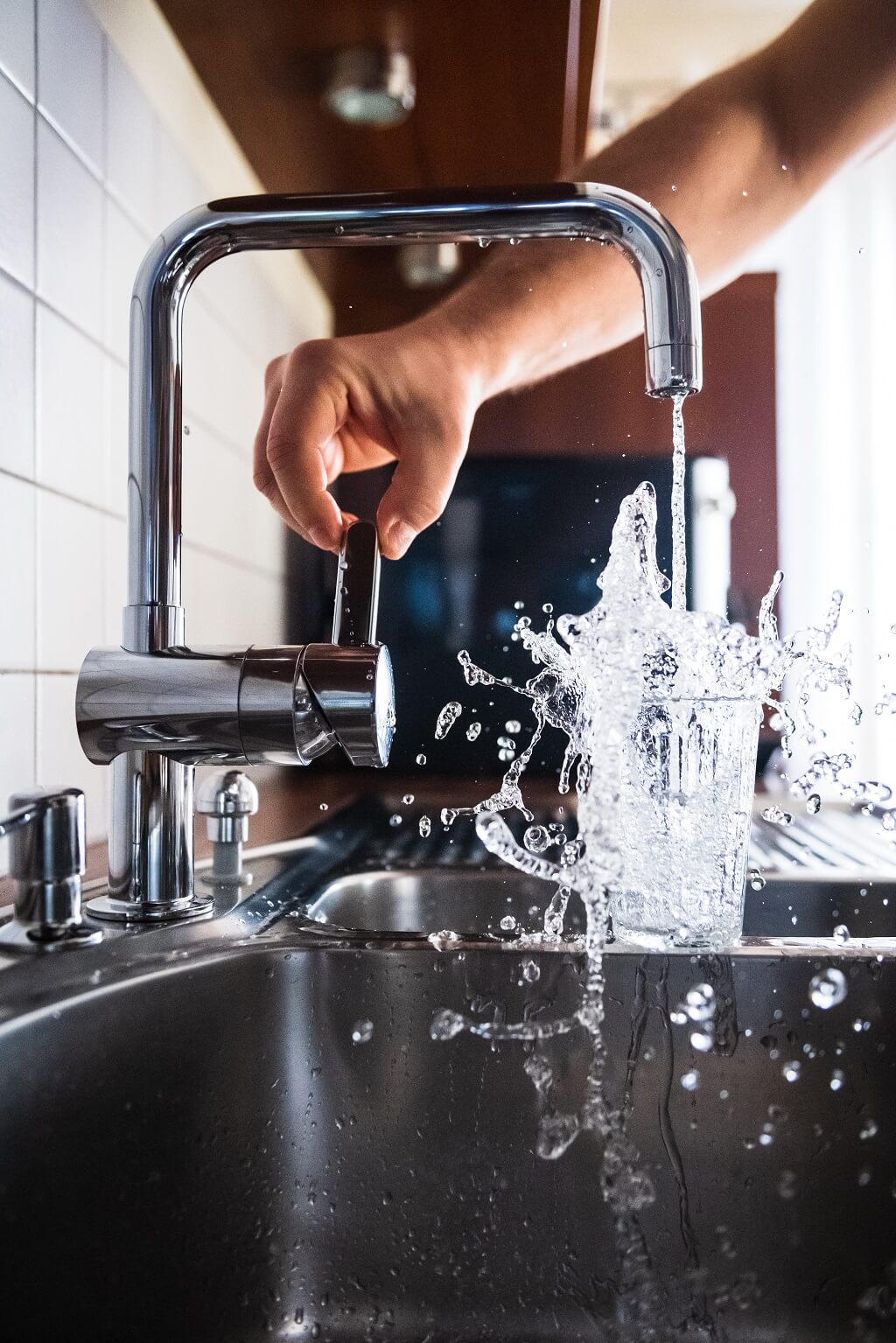
Our Recommendations
The following is a list of the highest-rated tankless, standard, and countertop RO systems from some of the most progressive water treatment manufacturers in the industry. The units below have efficient wastewater and high output to pure water ratios:
Waterdrop M5 Countertop RO Water Filter
Waterdrop’s countertop system must connect to the plumbing under your sink in order to produce wastewater and drinking water. In comparison to other systems on this list, there is no interference with any associated faucets. Those with designer kitchen faucets are encouraged to check out this particular RO water treatment system.
The Waterdrop M5 has a silent pump (non-electric) and an all-around five-stage filter. It only takes a few seconds to replace the filter, and you’ll get either 550 water gallons or 12 months' worth of water!
You can store the removable 80 oz pitcher (which is BPA-free) in your fridge or relocate it to the area you want purified water to come out of. Once the pitcher is returned to its base, water will be automatically filtered by the system until it is full once again.
The Waterdrop M5 is comprised of a pair of sediment membrane layers, an RO membrane, a carbon block (post-activated) layer, and a high-quality carbon block. The filter has the potential to remove more than a thousand dangerous contaminants and heavy metals, including TDS, particulates, rust, sand, lead, and chlorine. It is even capable of eliminating foul odors and tastes!
Alcapure Countertop Reverse Osmosis Water Filter
Nothing needs to be installed under the sink with this water purifier, which makes it a favorite among those who rent their homes. The design couldn’t be more compact – the countertop purifier is a mere 9.5 in. wide. Suffice it to say, the AlcaPure water purifier will be perfect for small residences. Best of all, you can move it from one home to another when the time comes to relocate.
The AlcaPure comes with a 4-stage filter system that is capable of removing as much as 99% of harmful contaminants. Extra filters add magnesium and calcium, among other beneficial materials. The system’s post-filter takes away lingering impurities, small as they may be. You can expect this purifier to produce as much as half a gallon’s worth of water in 15 minutes or less.
Crystal Quest Portable Reverse Osmosis System
The Crystal Quest filtration system is impressive. Not only can it produce more than 2 gallons per hour, but it connects easily to a sink faucet. Use it in a hotel, RV, or anywhere there is a water source.
Key features of Crystal Quest:
- 10-stage filtration system
- Since it doesn't use electricity, it is portable and can get used almost anywhere
- No installation required
- Filter more than 50 gallons of water every day
- Highly affordable and low maintenance costs

